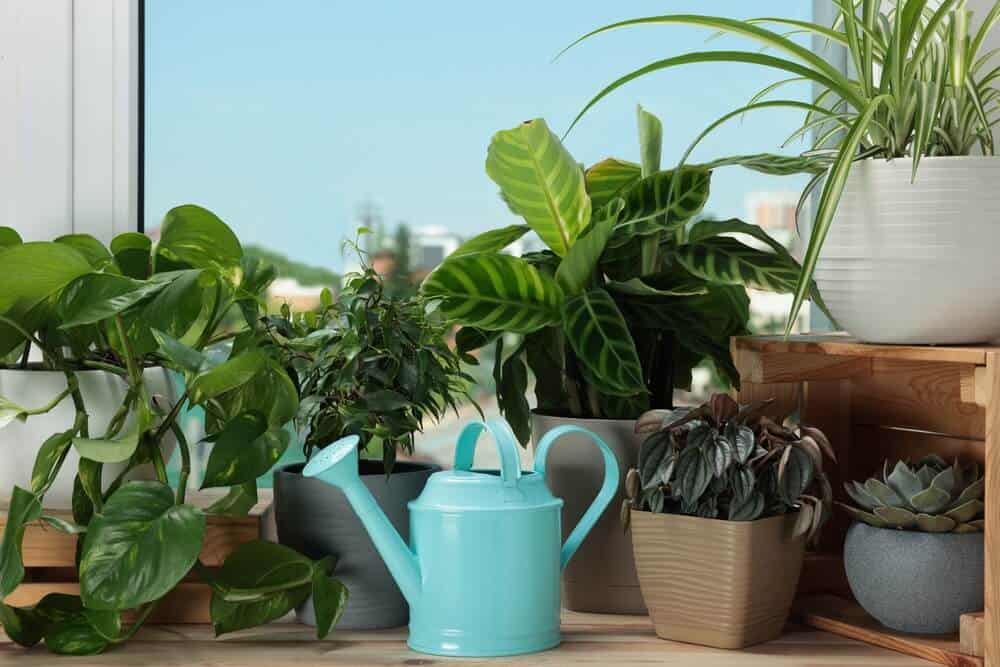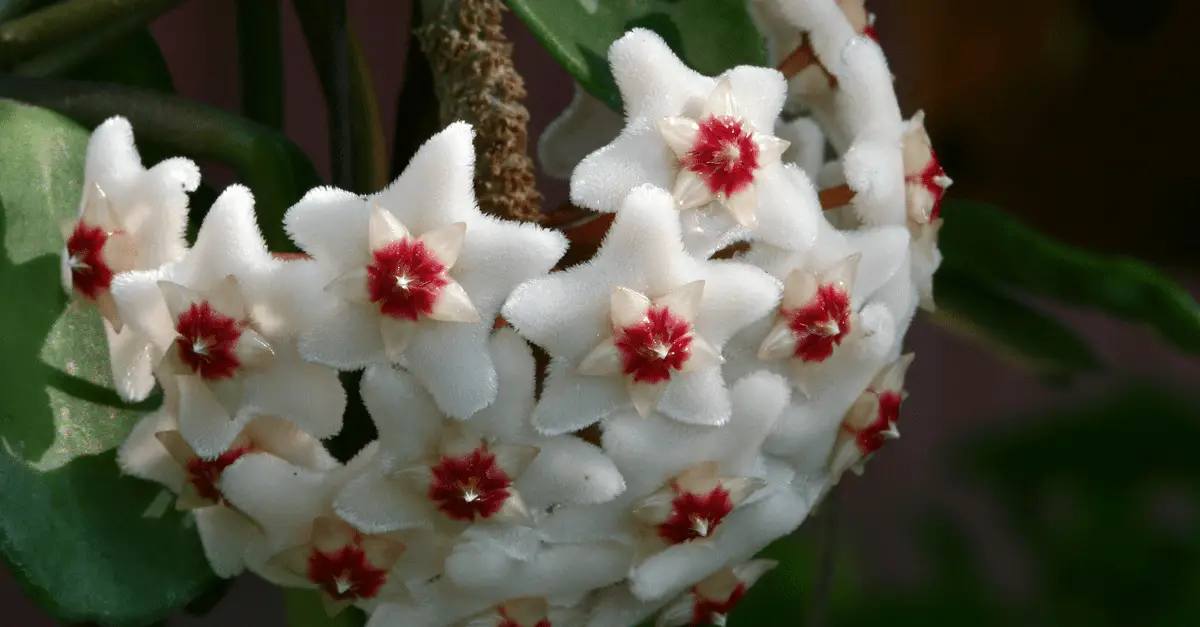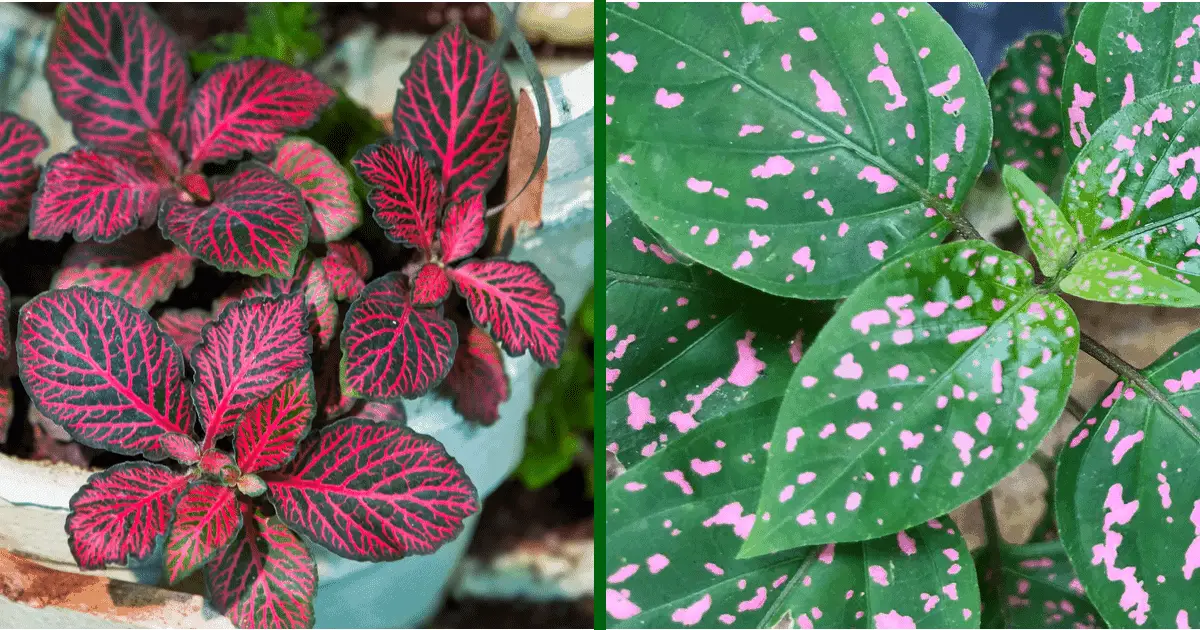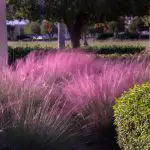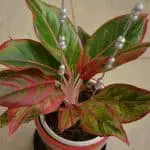Plants make us happy. And, really, there’s nothing quite like a bit of green to liven up a corner or a bathroom.
Unfortunately, those dark corners don’t always have enough light for your plants. If you’ve tried plants before and they keep dying, or you’re aware your area is low light, you need low light plants.
Low light plants include plant species that thrive in lower light conditions. Normally, this includes much of a plant genus or several subspecies. For this reason, many of these plants are a genus rather than a specific species.
In fact, many of them are also primarily available as hybrids from nurseries, meaning they’ve been bred to offer traits like thriving in lower light.
This article will cover ten of the best no-light indoor plants. This will include a few common houseplants as well as some houseplants that are suitable for almost no light at all.
1. Aglaonema (Chinese evergreen)

The aglaonema or Chinese evergreen is a hardy, relatively easy to care for houseplant. It’s also available in a range of colors, from subtle green to bright shades of pink and splashy silver.
Chinese evergreens are beloved for their bright, colorful, and metallic leaves. Plus, they’re relatively easy to care for.
Additionally, you’ll find examples of this plant at every budget. The cheapest ones offer silver and pink leaves and can be purchased for under $10 in many stores. The most expensive are rare and harder to find, with price tags that sometimes exceed several hundred dollars.
Care:
- Soil: 1 part each peat, potting soil, and perlite
- Light: Low to medium, no direct sunlight
- Water: When the soil just starts to dry out. On average, 1-2 times per week in spring and summer and 2-3 times per month in autumn and winter.
- Size: 1-2 feet tall /1-2 feet wide at maturity
2. Aspidistra (Cast iron plant)
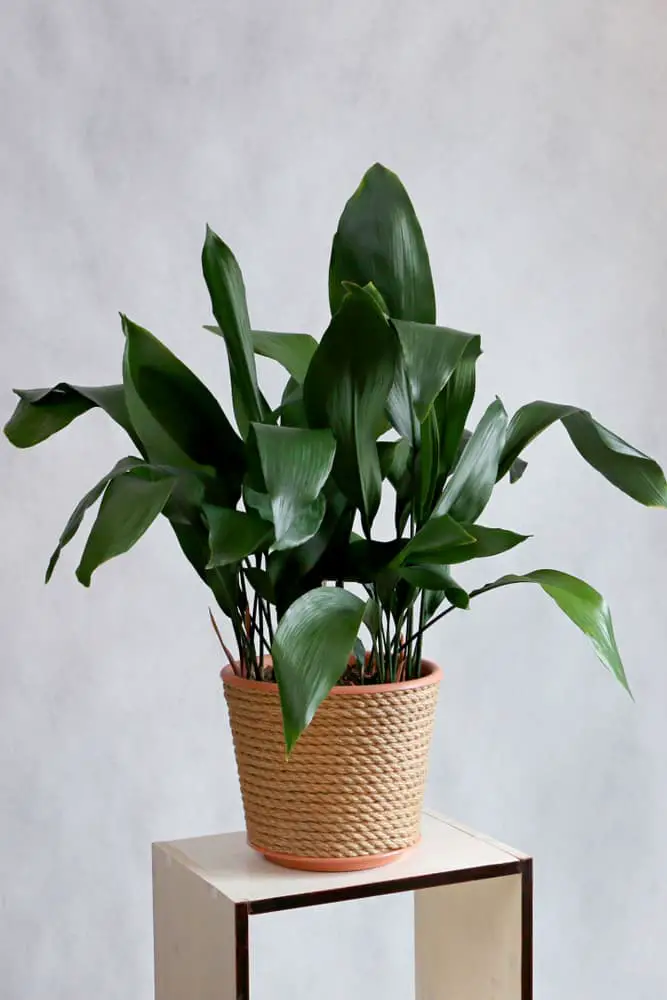
The aspidistra or cast iron plant is a tall, broad-leafed plant that’s extremely popular for its beautiful leaves and hardy temperament. This plant excels in lower-light environments.
As the name suggests, it’s also a relatively forgiving plant if you’re getting houseplants for the first time.
These plants are also relatively affordable. You can buy cast iron plants at any size. However, if you want an older and taller plant, they will cost more.
Care:
- Soil: Potting mix. Add peat if yours has none
- Light: Low to medium light with no direct sunlight
- Water: Water when soil starts to dry out, about 1-2 times per week in the summer and twice a month the rest of the year
- Size: 1-3 feet at maturity
3. Beaucarnea recurvata (Ponytail palm)
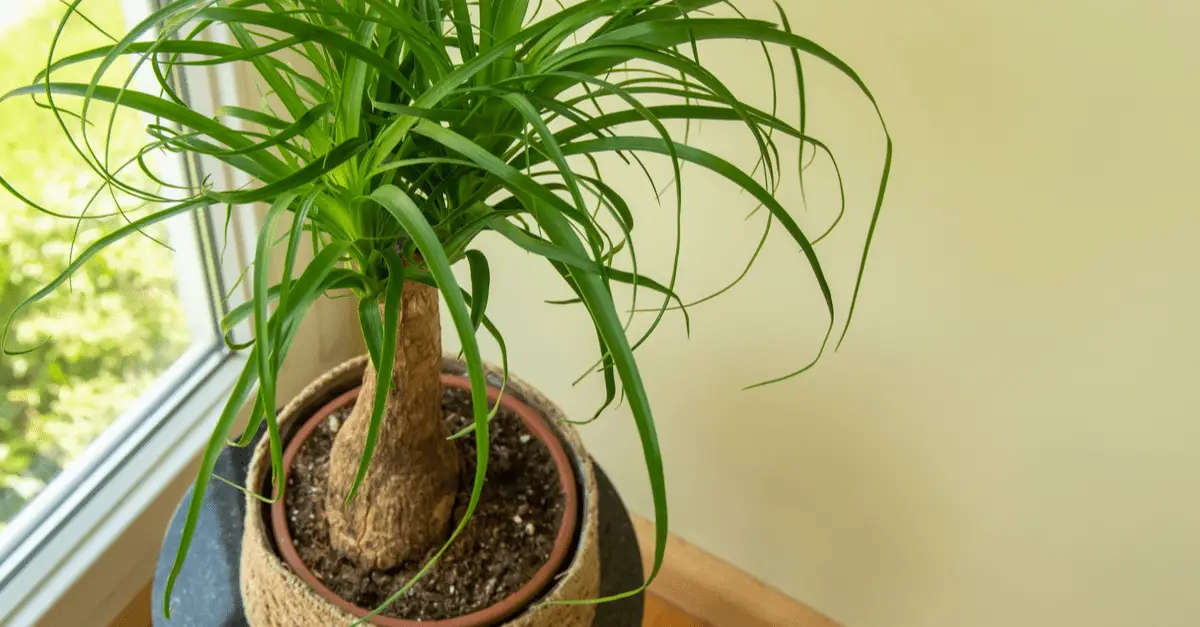
The beaucarnea recurvata or ponytail palm has been a popular houseplant since the 1940s. That means it’s affordable, widely available, and almost always cheap.
This plant is also a great, easy-to-care-for first plant, providing you don’t give it too much water.
Plus, with busy fronds, a long stalk, and slow growth, this is a rewarding houseplant. And, with a lifespan of 50+ years, you can enjoy it for a long time to come.
This plant thrives in bright light. However, it also tolerates low light, you’ll just see lower growth.
Care:
- Soil: Sandy, well-draining (use a cactus potting mix for best results)
- Light: Low to high (Direct sunlight is okay, full shadow with zero direct light is not)
- Water: 1x per month in winter, 1-2x per month in summer
- Size: 6 inches-3 feet
4. Dieffenbachia (Dumb cane)
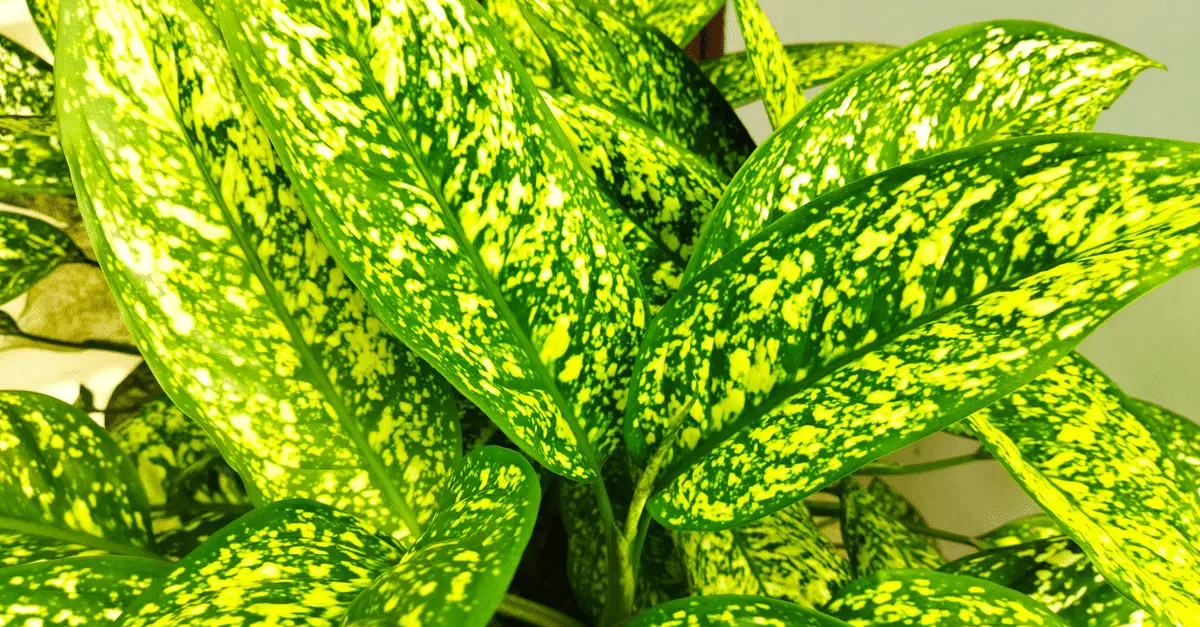
Dieffenbachia, commonly known as Dumb cane plants, are popular and beautiful houseplants. They’re also relatively low maintenance and thrive in lower light conditions.
However, you shouldn’t get them if you have small children or pets. Dieffenbachia are extremely toxic.
These big, bushy, and colorful-leafed plants are also ideal for areas with no sun. At the same time, they still prefer bright light. Therefore, a north window or a window with an overhang is ideal. However, they won’t survive a dark corner.
However, with large, colorful leaves, fast growth, and a bushy growth pattern, dieffenbachia are an ideal houseplant.
Care:
- Soil: peat-based potting mix, add perlite for better drainage
- Light: Indirect bright light, no sunlight
- Water: 1x per week in spring and summer, 1x per 2 weeks in autumn and winter
- Size: 1-10 feet tall, 1-3 feet wide
5. Hedera helix (English ivy)

English Ivy, also known as Hedera helix, is a popular indoor and outdoor plant. It’s well-known for its hardiness, including its ability to survive even the lowest light conditions. That hardiness is complemented by a range of leaf patterns, with white and green, green, and even yellow patterns available.
You’ll want to keep your English Ivy in mostly bright but indirect light. A very dark corner will result in leggy growth and long vines with few leaves. However, you can easily keep this plant alive on just fluorescent lights.
Care:
- Soil: Potting mix, add perlite for drainage
- Light: Indirect bright light, no sunlight
- Water: Keep moist but not wet. Usually 1x+ per week
- Size: 1-10+ feet long (hanging)
6. Homalomena
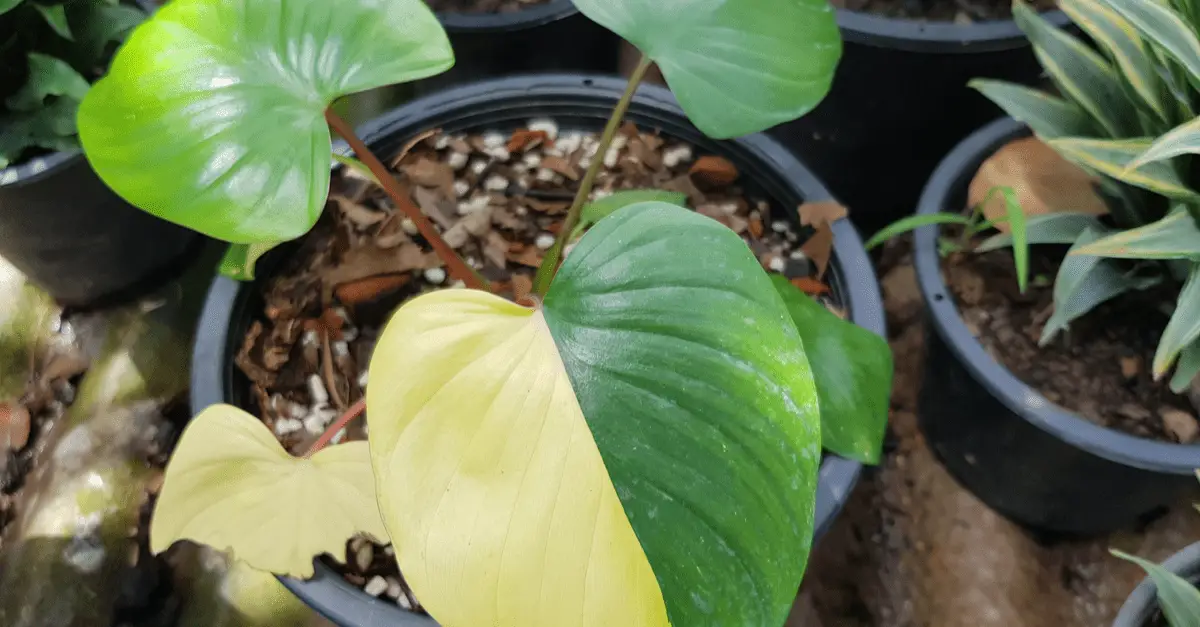
Homalomena are relatively new to the plant market, but quickly becoming popular as beautiful and hardy houseplants.
These plants range in color, size, and cost – meaning you have plenty of options. The most common are simple green with broad, shiny leaves. Rarer versions have pink, silver, red, and black leaves.
These houseplants are ideal in indirect light. A north-facing window or 3-4 feet from a west or east-facing window is ideal.
They should not be in direct sunlight. However, too little light will cause them to drop leaves.
Care:
- Soil: 50% sand and 50% soil
- Light: Indirect bright light with no direct sunlight
- Water: Allow the top 50% of the soil to dry out between water. Usually 1x per 2 weeks or 1x per 3 weeks depending on the plant size and the pot size
- Size: 1-3 feet high, ½ to 1 feet wide
7. Epipremnum (Pothos)
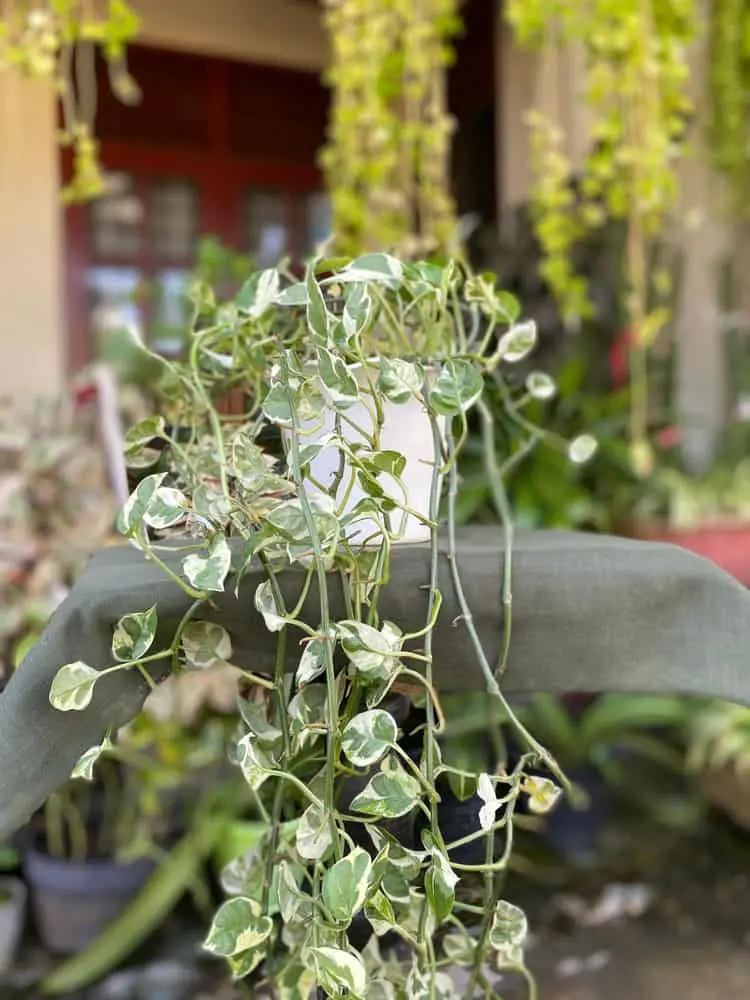
Epipremnum are one of the most popular low light houseplants available. They also come in dozens of colors and sizes, ranging from simple green to bright neon.
The closely related Scindapsus, which is also sold as a pothos, is also a good choice. Here, Scindapsus “Silvery Anne”, which has silver splashes on the leaves, Epipremnum aureum “Neon”, and Philodendron hederaceum are among the most popular.
In addition, you can normally expect that these need bright but indirect light. If plants don’t get enough light, they will get leggy and leaves get smaller. However, you can train them up a post or wall to get bigger leaves.
Care:
- Soil: Potting soil + coco coir or perlite
- Light: Indirect bright light, some direct sunlight is tolerated
- Water: Water when the leaves start to curl; usually about every 1-2 weeks
- Size: 1-15+ feet long
8. Dracaena trifasciata (Snake plant)
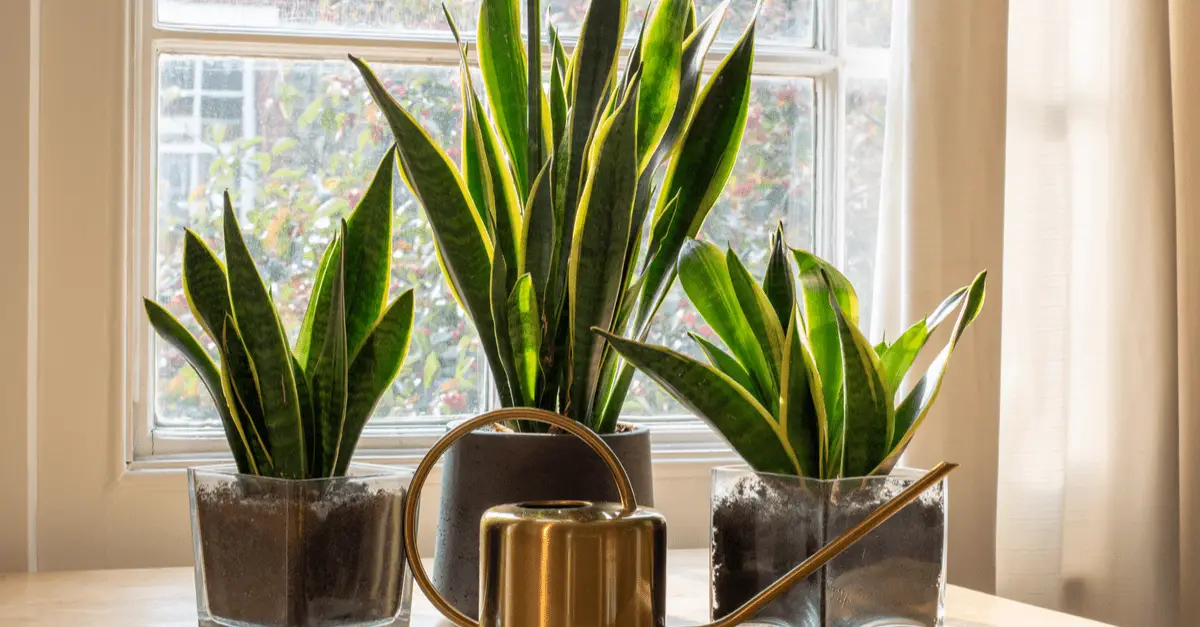
The snake plant, recently renamed from sansevieria to dracaena, is an extremely popular and hardy houseplant.
In fact, these plants survive nearly any household conditions except overwater. Plus, with a wide variety of colors and varieties to choose from, snake plants fit into almost any décor scheme.
Snake plants have wide, flat fronds that extend upwards. Some varieties are full green. Most have black or yellow striping on the leaves.
Care:
- Soil: Well-draining potting mix
- Light: Low to high, completely shaded will eventually kill it
- Water: 1-3x per month in summer, 1x per month in winter
- Size: 1-5 feet tall
9. Spathiphyllum (Peace lily)

Spathiphyllum or the peace lily is an easygoing and shade-loving plant, providing you like watering plants. If you normally kill cacti or palms by overwatering them, this is a great plant for you.
Here, the peace lily will tolerate complete shade. However, some brightness from a window or lamp is necessary for blooming. In addition, this plant will not survive direct sun.
Most peace lilies are common and readily available. However, you can also opt for exotic varieties like Spathiphyllum “Domino”, which has white striping or variegation on the leaves.
Flowers also vary in color, but white is the most common.
Care:
- Soil: Peat-based potting mix with perlite or coco coir
- Light: Low to medium light, with bright indirect light preferred, no direct sunlight
- Water: 1x per week or more. Allow the top of the soil to just dry out before watering again
- Size: 1-3 feet tall, 1-2 feet wide
10. Syngonium (Arrowhead plant)
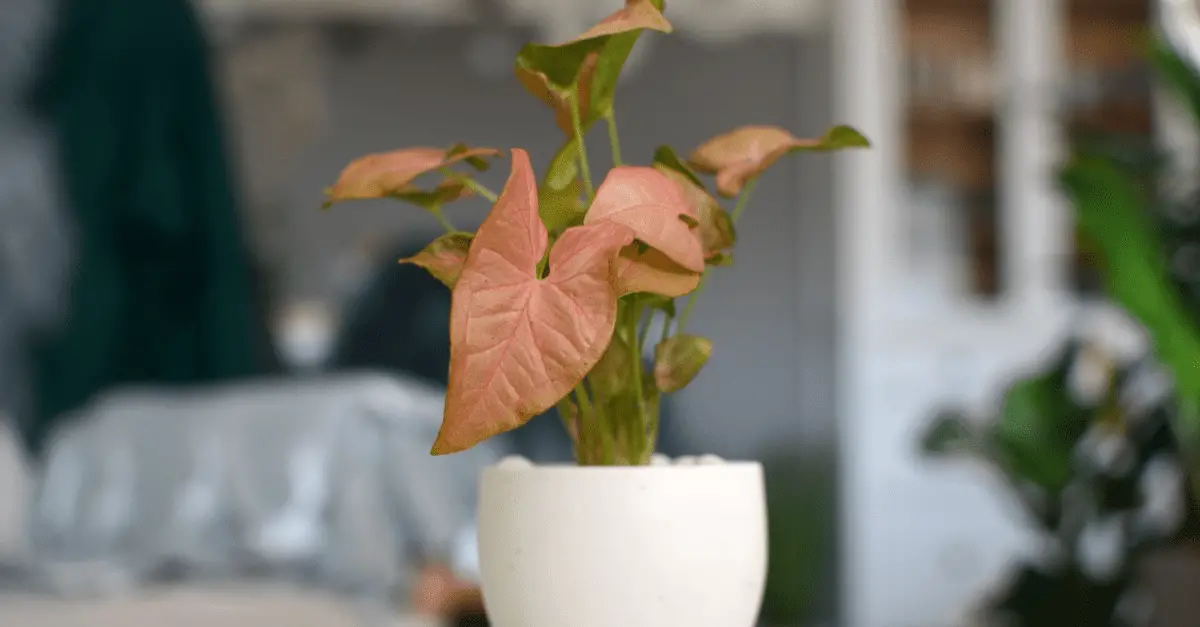
The Syngonium or arrowhead plant is an affordable, easy-going, and diverse plant. It’s extremely popular for its ability to tolerate most light environments.
And, with a range of colorful leaves and patterns, it’s far from boring. Here, varieties like the Syngonium “pixie” and “neon robusta” are among the most popular.
Additionally, arrowhead plants do well in low-light environments. However, they will grow faster if they get some light sunlight from an east-facing window.
That makes this plant ideal for spaces 3-5 feet away from south or west-facing windows, or a few feet from an east-facing one.
Care:
- Soil: Potting mix or sandy loam mix
- Light: Low to medium, indirect light
- Water: 1x per week in the summer, 1x per 2 weeks in the winter
- Size: 1-5+ feet tall (creeping plant that can be trained to climb)
FAQ
If you still have questions about finding low or no light houseplants, these answers should help.
What counts as low light?
Every plant needs light to survive. In fact, plants use photosynthesis to transform light into energy to convert oxygen and water into carbohydrates and sugars. Those sugars keep your plant alive, provide it the energy for growth, and form the basis of the molecular structure of the plant.
Without sufficient light, your plant will deplete its energy reserves and eventually die.
Lowlight qualifies as:
- No direct sunlight
- A north-facing window
- A window with an overhang
- A corner 3-4 feet from a window
If you have a light meter handy, that’s about 50-150 umol m-2s-1 / 50-250 foot-candles. At lower than that, almost no plants will survive. If you have a grow light, that’s about equivalent to a 10–15-watt bulb.
What makes a good low light plant?
Lowlight or “no light” plants are quite simply plants that grow in the shadow in nature.
Most houseplants are simply tropical plants. Coming from the tropics means there’s no real distinction between summer and winter for the plant, meaning they don’t have a dormant season.
This allows the plant to survive the lack of temperature changes in your home. However, it also means you can look at where the plant grows to determine how it will work in your no light space.
Understory plants, or the plants that grow beneath trees or bushes, are the best option.
What happens when your plant doesn’t get enough light?
If your plant doesn’t get enough light, you’ll start to see signs pretty quickly.
The first is that the plant will stop producing as much chlorophyll. That’s the green pigment that colors the leaves. You’ll notice your plant is paler possibly even yellowish or white.
In addition, you’ll notice that the stems get longer. The plant sends up longer stalks of growth in between leaves.
This is a natural ‘coping mechanism’ as the plant tries to spend its energy on growing a leaf where there might be more light. So, the plant tries to reach towards a light source.
Most people think a plant with all stem and no leaves is ugly, so you probably want to avoid this.
Finally, your previously healthy plants will start to drop leaves. That’s because they don’t have the energy reserves to keep those leaves alive.
What if there are no windows in the room?
If you have no windows or you’re putting your houseplant at the back of a big room, you’ll want to make sure it will survive.
Here, buying a grow-light or a full spectrum lamp is a great call. These can keep your plant alive, even when there’s no light from outside.
Alternatively, you can choose plants that thrive in extreme conditions. For example, installing a moss wall or exhibit is a great alternative.
On the other hand, plants like begonia pavonina thrive in extremely low light conditions but are also rare and require significant humidity to survive.
Conclusion
Putting houseplants in a low light space normally means paying attention to how much light the plant gets in nature.
In addition, buying a few similar houseplants and rotating them through a medium and a low light space can help to keep your houseplants growing and thriving.
Hopefully, this guide helps you pick a plant that will do well in your space.
